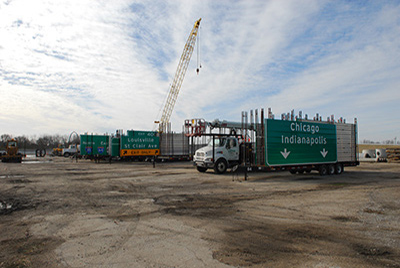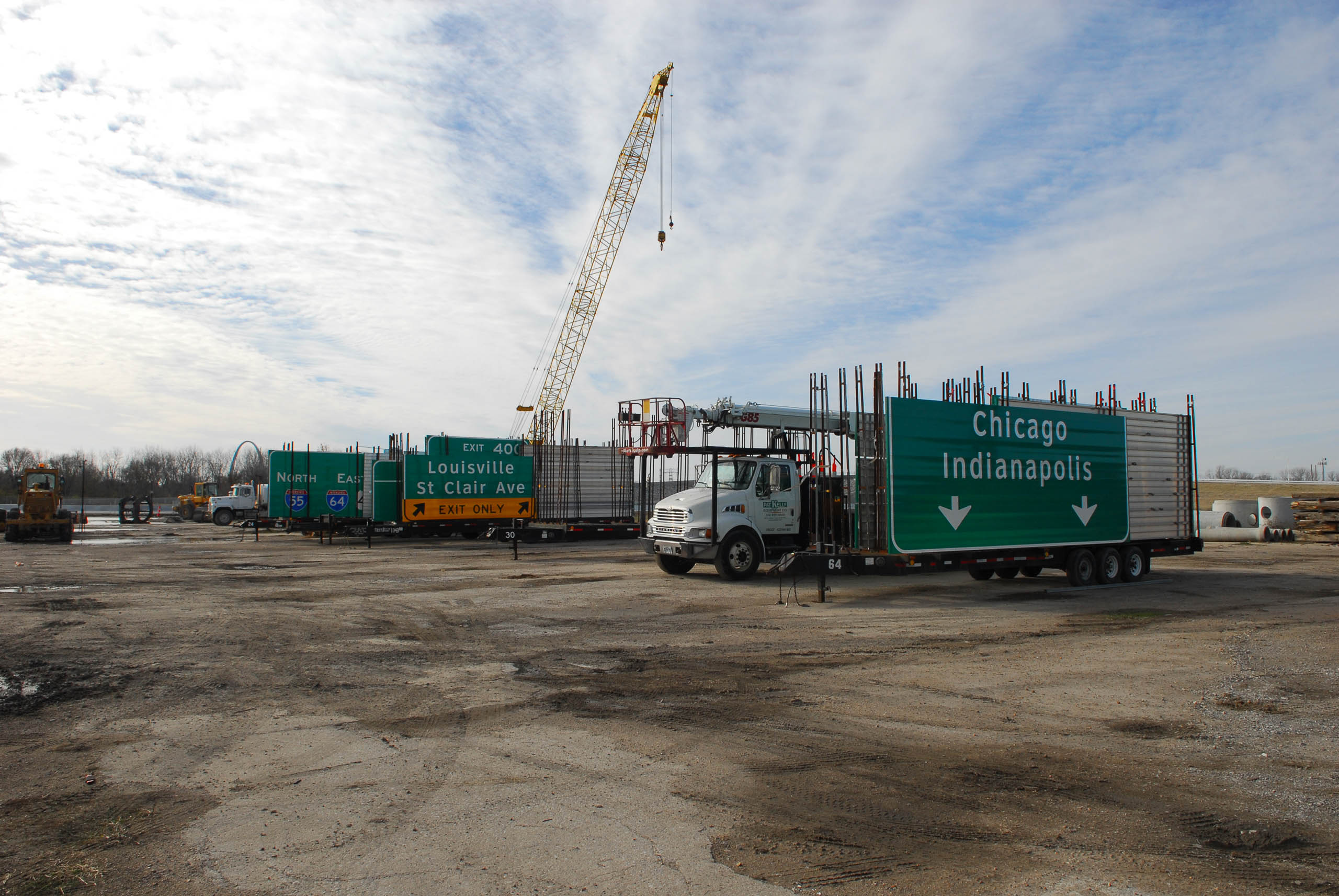



Passing under a new interstate bridge, one enters a vast, empty tract of floor slabs and partial ruins. This is the site of the former National City. Once a company town and home to the largest hog market in the world, National Stockyards Company, the city underwent a period of intensive industrial capitalization in the second half of the nineteenth century, and one of parallel disinvestment in the latter half of the twentieth, as did much of the region's industry. During its zenith in the early twentieth century, 50,000 animals were processed weekly—second only to the storied Union Stockyards on the South Side of Chicago.
Built as a company town, National Stockyards constructed just enough housing for its workers to officially incorporate as a municipality, freeing itself from the taxation and regulations of East St Louis to its immediate south. At one time, National City was the only municipality in the area with paved roads, electricity, and fire hydrants, with many commenting that the soon-to-be-slaughtered animals had better water than people living in next-door East St. Louis. It housed one of the most opulent hotels in the area in the Allerton House and, perhaps unsurprisingly, one of the more sought-after steak houses, known for serving 300 dozen eggs during its Monday morning breakfasts.
The scale of the operations was staggering, with an entire range of infrastructures—from financial institutions to sewers—giving shape to what many called a city unto itself. Of the 656 acres that the company owned, 100 acres were under shelter with much of the rest enclosed in yards built of cedar posts and paved with locally-produced bricks. Waterworks were constructed in 1873 on neighboring Cahokia Creek—with a capacity of 600,000 gallons connected to the city's 27 fire hydrants. Additionally, members of the company board incorporated the East St. Louis and Carondelet Railway—better known as the Conlogue line—to connect the stockyards with the ferry terminal at East Carondelet. Explicitly built as a transfer line, the Conlogue brought stock from virtually all points west of the Mississippi across the river in bulk-ferries and then up the riverfront to the yards—in a crossing that bypassed the TRRA monopoly on crossings in the downtown area.
As an economic instrument, the stockyards looked to make up in volume the narrow margins of this type of industry. In the vast scale of landholdings owned by the company one can read an early intention for the co-location of associated industry. In a sort of industrial piggybacking that is common across many industrial sectors, horizontal diversification gave rise to a number of integrated industries—with tanneries, slaughterhouses, packinghouses, rendering plants, and grinding mills all quickly locating on company land adjacent to the stockyards. Armour, Swift, Royal, and Hunter were all national interests operating packing plants in the area.
With regional pressures voicing opposition to a slaughterhouse so close to the City of St. Louis, the decentralization of hog processing in the late twentieth century with the rise of the Interstate Highway System, and the concomitant growth of trucking over rail, National City slowly wound down its operations. In 1996, the city evicted all of its residents, was officially disincorporated, and soon thereafter nearly entirely razed its facilities—thus affecting an erasure of a specific historical moment in the history of American Bottom development.
Intangible Heritage on the American Bottom